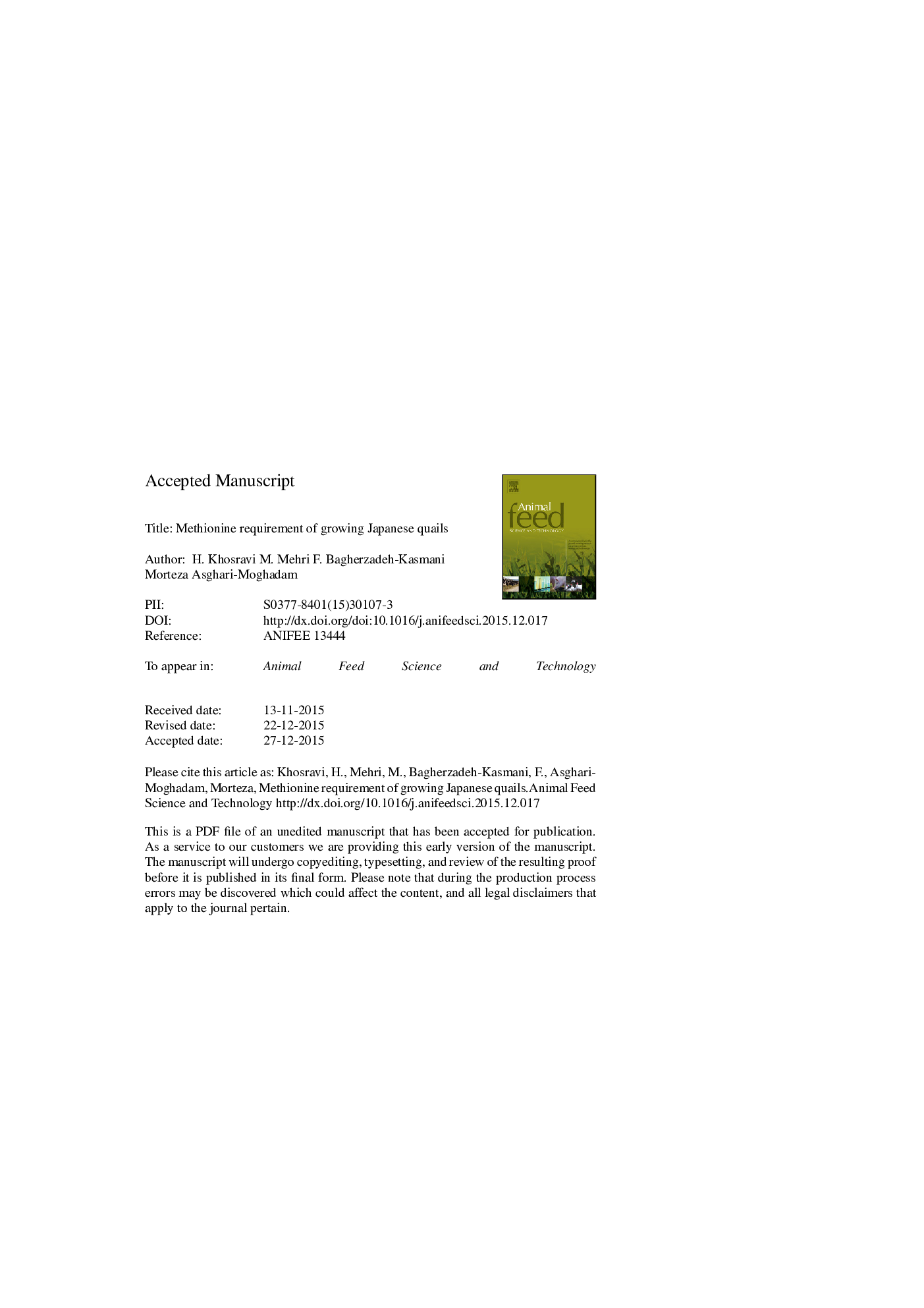| کد مقاله | کد نشریه | سال انتشار | مقاله انگلیسی | نسخه تمام متن |
|---|---|---|---|---|
| 8491281 | 1552373 | 2016 | 24 صفحه PDF | دانلود رایگان |
عنوان انگلیسی مقاله ISI
Methionine requirement of growing Japanese quails
ترجمه فارسی عنوان
نیاز متیونین به رشد فلفل ژاپنی
دانلود مقاله + سفارش ترجمه
دانلود مقاله ISI انگلیسی
رایگان برای ایرانیان
کلمات کلیدی
موضوعات مرتبط
علوم زیستی و بیوفناوری
علوم کشاورزی و بیولوژیک
علوم دامی و جانورشناسی
چکیده انگلیسی
In most cases that poultry diets are based on corn-soybean meal, methionine may be the first growth limiting amino acid that should be supplemented through synthetic dl-methionine. Since there is limited information on amino acid requirements of modern Japanese quails especially on methionine, a dose-response experiment with seven doses of dietary methionine (3.80, 4.30, 4.80, 5.30, 5.80, 6.30, and 6.80Â g/kg of diet) was conducted to estimate the nutritional needs of quail chicks for methionine. A total of 420, 7-day old quail chicks were randomly allotted to one of seven dietary treatments with 5 replicate pens and 12 birds per pen. Performance traits including feed intake (FI), weight gain (G), and feed/gain and carcass attributes including breast meat yield (BMY) and leg meat yield (LMY) were measured and used to fit several models (e.g., spline and quadratic polynomial models) for requirement estimations. Dietary treatments significantly affected all response parameters (PÂ <Â 0.001), so that G and feed/gain quadratically, and BMY and LMY linearly responded to incremental levels of methionine (PÂ <Â 0.001). The mean value of methionine requirements for G, feed/gain, BMY, and LMY were 5.21 (min: 4.73, max: 5.81), 5.12 (min: 4.46, max: 5.46), 5.37 (min: 4.80, max: 6.52), and 5.95 (min: 5.52, max: 6.21) g/kg of diet, respectively. The corresponding estimates for total sulfur amino acids (TSAA) were 9.20, 9.11, 9.36, 9.94, and 9.71Â g/kg of diet, respectively. This study showed that methionine requirements for maximising carcass yield (e.g., BMY and LMY) might be higher than those needed for maximising performance and estimated values of methionine and TSAA requirements were 16 and 25%, respectively, higher than those recommended by NRC (1994).
ناشر
Database: Elsevier - ScienceDirect (ساینس دایرکت)
Journal: Animal Feed Science and Technology - Volume 212, February 2016, Pages 122-128
Journal: Animal Feed Science and Technology - Volume 212, February 2016, Pages 122-128
نویسندگان
H. Khosravi, M. Mehri, F. Bagherzadeh-Kasmani, M. Asghari-Moghadam,
